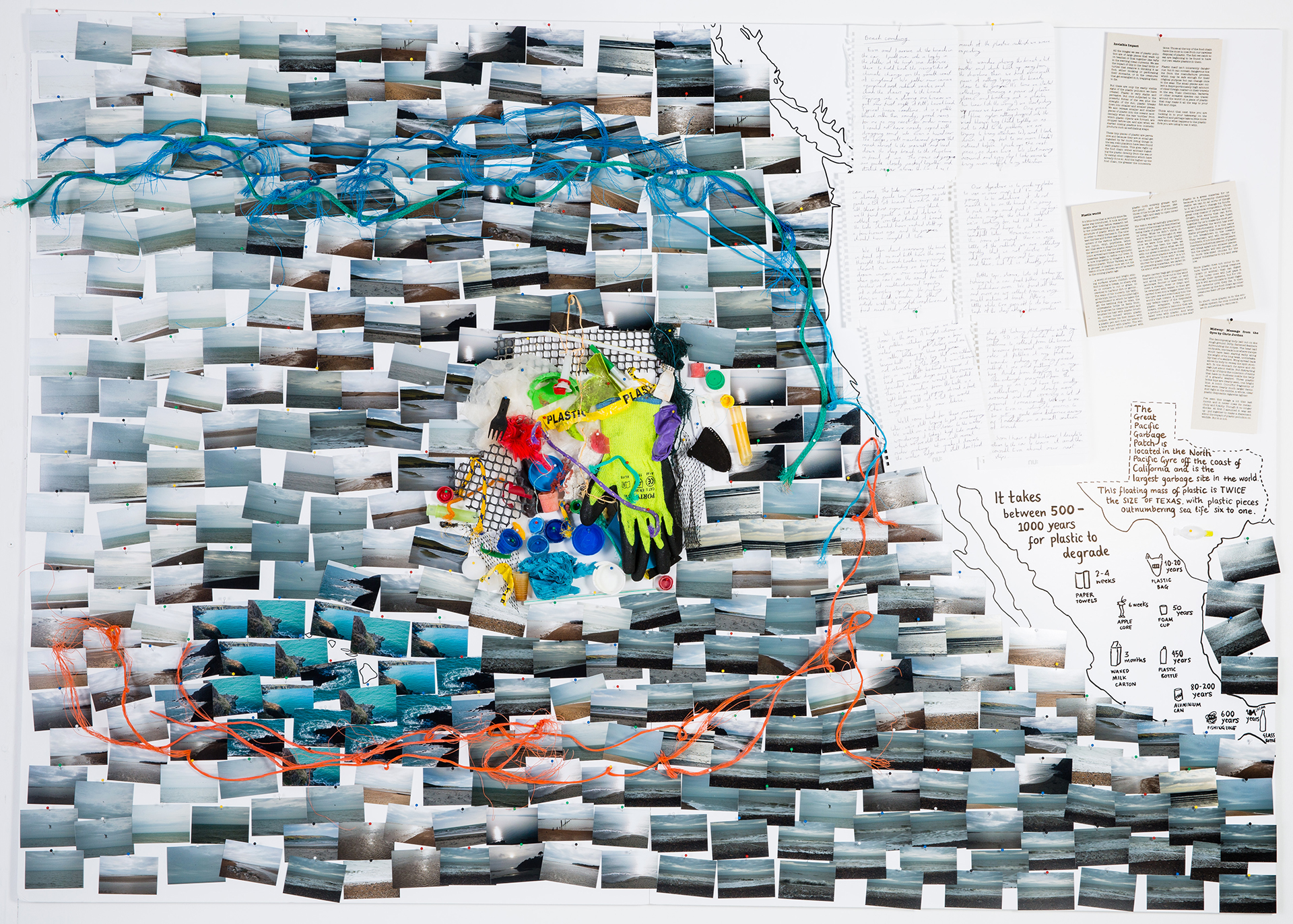Loading...
Mapping The Plastic Oceans
A collaboration with Eva Clifford (evaclifford.com)
Plastic pollution of the world’s oceans is a rapidly increasing problem. Due to its slow decomposition rate, plastic - which has become entrenched in our disposable culture - is posing an urgent threat to the environment. Carelessly disposed of, it can end up in our rivers and streams, washing into the seas and eventually travel around the world in the vast ocean gyres (currents that sweep between the continents).
Large amounts of plastic have accumulated in 5 vast vortices in the Pacific, Atlantic and Arctic oceans. The first of these “garbage islands” to be discovered in the 1980s was the one in the north east Pacific, between Hawaii and the west cost of America, and covers an area roughly twice the size of the state of Texas.
The term “garbage island,” as these gyres of marine debris have become known by, is a misleading term. The plastic is not in one solid mass that is visible from space as we might imagine; it is only visible when one gets close to it. By attempting to physically map out these islands, our project attempts to bring attention to these vortices of garbage and highlight the impact they have on our oceans and wildlife in a visually striking way.
The text is mine, the photographs are Eva's
























